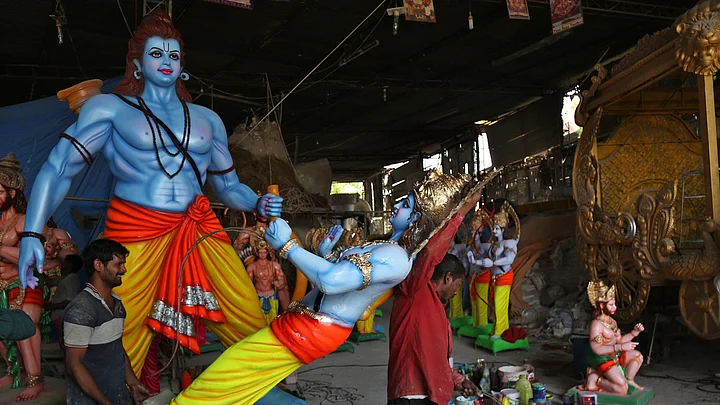(This article was first published on 19 October 2015 and is being reposted from The Quint’s archives for Navratri.)
It’s Durga Puja and it’s Navratra, a time to celebrate the slayings of Mahishasur and Ravan. In a country as large and diverse as ours, there are various and even opposing, ways of celebrating this holy time.

Two reports in The Times of India illustrate this point. Firstly, an old Ram Leela in Faizabad, Uttar Pradesh has been easing out Muslims from lead roles in the religious performance. On the other hand, in Cooch Behar in Bengal, a 250-year-old legacy of using human blood as part of the rituals may be on its last legs.
Main Parts Reserved For Vegetarians
The Ram Leela in Faizabad, UP has been a long standing example of Hindu-Muslim brotherhood. Since 1963, Muslims have organised and played lead roles in the local Ram Leela performance. But that tradition has seen a change over the last two years.
Some local people objected to Muslims performing lead roles in Ram Leela. Their objection was that since Muslims eat meat, they shouldn’t enact the role of gods. When we came to know about the objections, we eased them out.
– Majid Ali, President Ram Leela Association to Times of India
Keeping the sentiments of their neighbours in mind, Muslims playing lead roles have been replaced by Hindus, who are vegetarians, at least during the Navratra period. However, Muslims continue to portray smaller parts.
A Blood Sacrifice to the Goddess
Until 250 years ago, there was human sacrifice at the Bododevi temple in kingdom of Cooch Behar, now in West Bengal. Then, Duar Bakshi Rati Deb Bakshi, a person appointed by the king to oversee religious matters asked him to do away with the cruel practice.

In lieu of a human life, Shibendranath Ray will spill three drops of blood on the idol inside the temple. According to locals, one of Ray’s ancestors was the last human sacrificed to the goddess.
Ray though is unmarried, and unless someone from his extended family steps forward, the ritual will not continue after his death.
In both Faizabad and Cooch Behar, there is change in the air as far as Navritira and Puja rituals are concerned. But while they last, they do represent two poles between which our rich tradition lies.
(At The Quint, we question everything. Play an active role in shaping our journalism by becoming a member today.)
